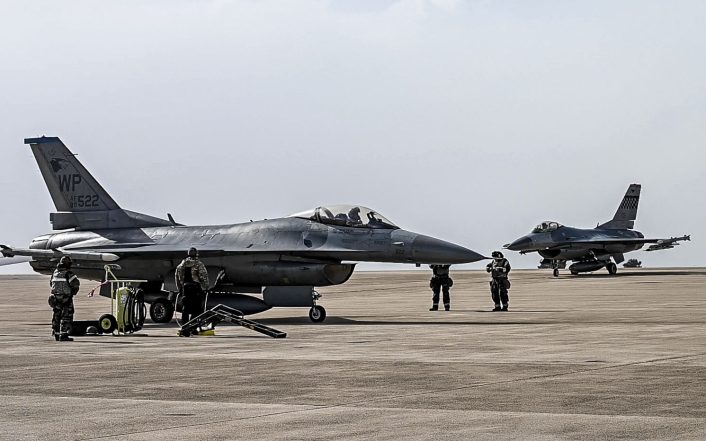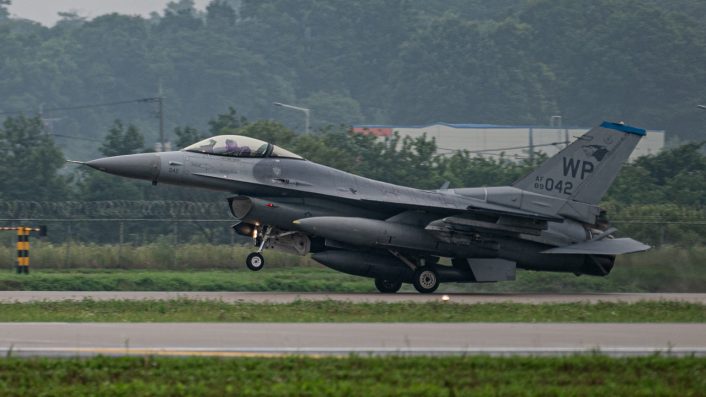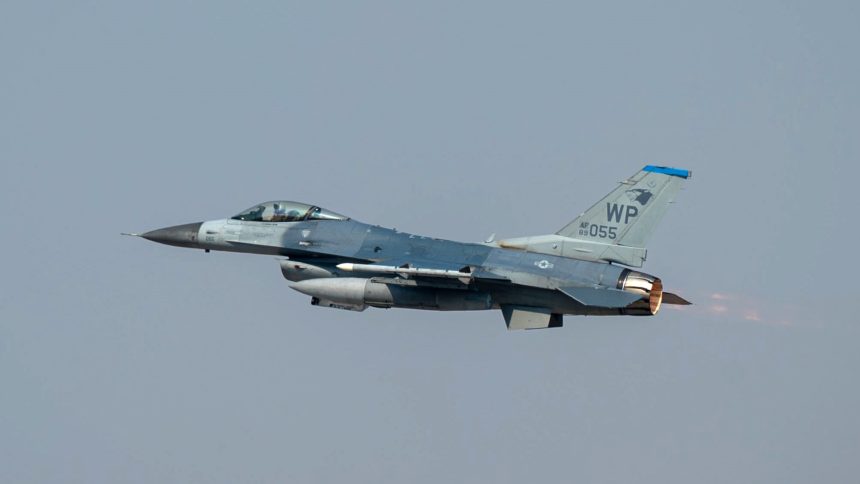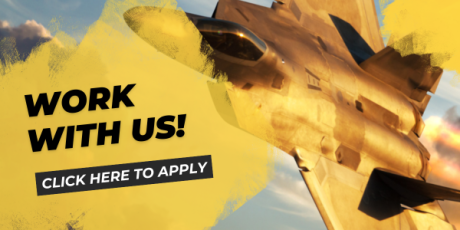The Seventh Air Force will extend its Super Squadron test at Osan Air Base for a second phase, adding another squadron with 31 F-16s.
The U.S. Seventh Air Force, which oversees air operations in Korea and in the Northwest Pacific, has received the approval by the Chief of Staff of the Air Force, General David Allvin, to extend its “Super Squadron” test for a second phase. This new phase will begin in October 2025 and will build on the results of the data analyzed during the ongoing first phase.
Super Squadron Phase 2
The initial effort consisted in relocating some of F-16s based in the Korean Peninsula for a test intended to optimize combat capability and increase readiness in support of the ROK-U.S. Alliance and the larger Indo-Pacific region. With the first phase, the 36th Fighter Squadron gained nine F-16s, bringing the total of its assigned aircraft from 22 to 31.
NEWS: We’re standing up a second Super Squadron at Osan AB. This temporary change allows us to test and validate force generation capabilities on the Korean peninsula, ultimately fostering a more lethal, ready air component…No doubts that the ROK-U.S. alliance is ironclad! (1/2) pic.twitter.com/8etw0QcZIp
— General David Allvin (@OfficialCSAF) April 24, 2025
“This Super Squadron effort demonstrates our steadfast focus on readiness and combat capability to achieve U.S. national security objectives,” said Lt. Gen. David Iverson, Seventh Air Force commander.
In preparation for the second phase, this summer 31 additional F-16s and approximately 1,000 Airmen will transfer to Osan AB from Kunsan AB to establish the second squadron. It is unclear if the second Super Squadron will be an entirely new squadron or one of the two assigned to Kunsan’s 8th Fighter Wing, the 35th and 80th Fighter Squadrons, from which the Vipers will be drafted.

The service explained that the movement of personnel and fighter aircraft will be a temporary shift, seeking to optimize capabilities and maximize combat effectiveness. Anyway, the movement will be far more complex than the first phase, as it is of a different magnitude compared to the movement of nine F-16s and 150 Airmen of the first phase, adding new challenges that will provide additional data to the service.
This was also mentioned by the Seventh Air Force’s press release, which said the first test was launched to evaluate if the super squadron concept would maximize combat effectiveness when considering sortie generation, maintenance, manpower, and logistics requirements, and now the second phase will continue to assess those areas at a larger scale, as the increased numbers of aircraft and Airmen fully test limitations.
“In the coming weeks, AFPC will begin making assignment updates,” said Lt. Col. Aaron Tissot, Seventh Air Force director of manpower, personnel, and services. “Our goal is to minimize disruptions and ensure a smooth transition for our Airmen throughout this process.”

The decision to continue with a second phase, while still about halfway through the first one started in October 2024, is based on the data collected so far that has been analyzed. The Seventh Air Force was thus granted the approval to continue the experiment for another year, further expanding its scope.
“The past months of data reveal that we’re on the right track and the consolidated, larger unit has shown some increases in readiness and combat capability, while also exposing some challenges,” said Lt. Gen. David Iverson, Seventh Air Force commander. “With this success we’re now expanding the scope, by consolidating the F-16s in Seventh Air Force at Osan, to further determine if the super squadron construct is the right path for future airpower generation here in Korea.”
Obviously, with the second phase, Kunsan will see most of its Vipers leave the base, with only a handful remaining there. However, the service says the 8th FW will continue to operate as a primary exercise and rotational force bed-down location for U.S. air component forces in ROK.

This way, the unit will maintain active flightline operations and facilities, in addition to maintaining war reserve material and munitions at multiple locations across South Korea. This mission is a critical part of Seventh Air Force’s task of providing credible combat airpower in the defense of the ROK-U.S. Alliance, says the service.
“We acknowledge this is a major shift in how we operate here at Kunsan,” said Col. Peter Kasarskis, 8th FW commander. “We’ll meet this change with the same warfighter mindset the Wolf Pack has maintained through our history, and strengthen our ability to accept follow-on forces, defend the base and take the fight north.”
“The Super Squadron test has no impact on Seventh Air Force’s ability to employ airpower to deter aggression and defend the Republic of Korea against any threat,” further added the Seventh Air Force.
Super Squadron Phase 1
In August 2024, the Seventh Air Force announced the launch of the Super Squadron test, which started in October and was initially set to last an entire year. The 36th Fighter Squadron gained nine F-16s, drafted from the 35th and 80th Fighter Squadrons at Kunsan Air Base, bringing the total of its assigned aircraft from 22 to 31.

The Vipers (as the F-16s are nicknamed by their crews) were transferred with 150 aircrew and combat support personnel accompanying. While at Osan, the additional aircraft took part in multiple exercises with the 36th FS.
“Osan was chosen as best able to support the housing and support needs of the Airmen required to execute the Super Squadron test, having recently supported similar personnel requirements during Kunsan’s runway construction project in 2023,” said Lt. Col. Karl Wiest, a spokesperson for Gen. Allvin. Osan is also home of the Seventh Air Force’s headquarters.









